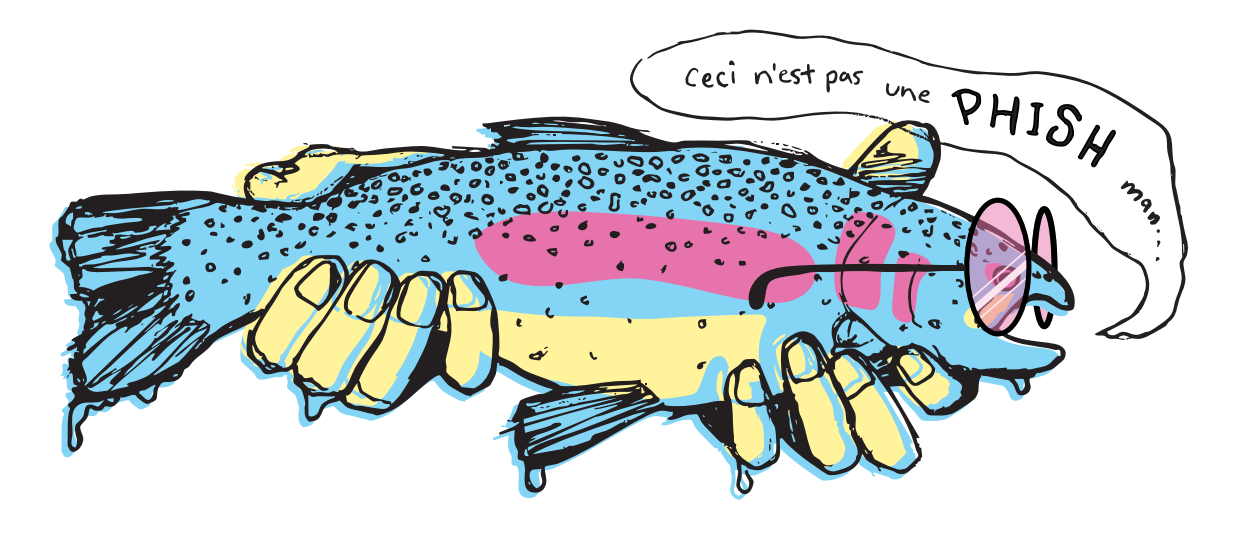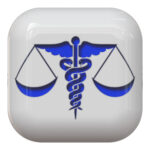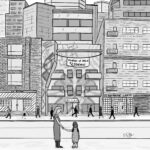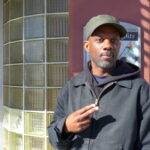I have a novel idea for your next sunny weekend, one to get you away from the nets in Washington Park and out wandering the city streets. A scavenger hunt for that quintessential Denver staple. How long until you spot a blue-and-red-donut-ed Phish license plate, a “Steal Your Face” Grateful Dead sticker, or a Billy Strings emblem on a t-shirt? I give it 10 minutes tops.
Hippies, the label people often apply to contemporary jam band fans, are everywhere in this city. Among other things, my passion for Phish and penchant for bright clothing and big jewelry make me a part of this scene, and I have long contemplated Denver’s abundance of “us.” Perhaps other denizens, crunchy or not, share my curiosity. Given the green light from Denverse to indulge my interest, I danced in to investigate.
I began by revisiting The Beats. A subculture of authors and poets who rose to notoriety in the 50s, The Beats shunned the cultural norms of the time, sought spiritual enlightenment, and loved their sex, drugs, and bebop jazz. I had a brief affair with them at 20 when a colleague questioned why I hadn’t read On the Road. “Get on it, Rachael. It’s required reading for all hippies.” And while I flew through Jack Kerouac’s masterpiece and enjoyed William Burroughs’ Junkie, I burned out halfway through Dharma Bums, and Naked Lunch confused the hell out of me.
However, The Beat influence along the Front Range is profound. Fans can take self-guided tours of popular old haunts, the faces and names of Beat writers and luminaries appear in murals and on buildings downtown, and Naropa University’s writing program, The Jack Kerouac School of Disembodied Poets, was incepted by Beat poet, Allen Ginsberg.
The Mile High is proud of its connections to these cats. On the Road follows its protagonist traipsing across the US, and though Denver isn’t the main setting, it’s a prominent one. In real life, the most famous Beats roamed this city, patronizing jazz clubs in Five Points and the bars along then-seedy Larimer Street. In a near perfect bridging of two subcultures, Denver-raised Neal Cassady, buddy of Kerouac and basis for his iconic character Dean Moriarty, has deep ties to the early days of the Grateful Dead, driving a bus for the Merry Pranksters, Kool-Aid acid testing, and inspiring songs.

Today’s hippies relate to Beat counterculture in several ways. Many of us have a proclivity for altered states of consciousness, improvisational music, and traveling on the open road, and it’s not considered unusual to forgo conventions such as marriage, children, or traditional jobs. Inheriting the “peace and love” from the flower power generation that followed The Beats, we (try to) practice similar tenets of kindness, respect, and support. Denverite Tiffany Jo Wirth noted she “found work, housing, and friendships to last a lifetime” within weeks of moving here because of the Colorado Phish Chicks Facebook group. And when the Marshall Fire destroyed hundreds of homes in late 2021, several Phish fans banded together to collect and drop off needed goods and supplies. We’re as civically engaged as a religious congregation, only instead of mass we attend concerts and in lieu of a tithe we’re gouged with ticket costs.
“Church” admission makes jam band fandom an expensive hobby. We attend a ton of concerts. It’s something all fans, no matter which band’s ticket stubs stack higher in their collection, have in common. We worship live music.
Denver’s history with the art of live music runs deep. For the first part of the 20th century, Five Points benefited by being the only jazz scene between St. Louis and California. It was an improv hotbed for decades, hosting legends such as Billie Holiday, Duke Ellington, Ella Fitzgerald, and Miles Davis. No wonder those hard-partying, erudite Beats appreciated its clubs.
When the world lost jam godfather and Grateful Dead bassist Phil Lesh, in October 2024, among the tributes pouring in was a quote from Lesh posted on Phishonphilm’s Instagram account: “When Coltrane was alive I would catch him every chance I had.” Jam wouldn’t, couldn’t exist without jazz. Both heavily rely on improvisation, that in-the-moment music-making unfamiliar ears may label as “noodling.”

And Denver, a city which aided in launching The Beats and birthing the cool, has nurtured the jam scene— and significantly so—since the late 60s, starting with the Grateful Dead’s first show here in 1967. The jam innovators played in the Front Range dozens of times, including 20 concerts at Red Rocks. Many consider their show on July 7, 1978, as one of their best. Widespread Panic holds the record for most sold-out performances at Red Rocks with 72. Phish’s first venture outside of New England occurred in 1988 in Telluride, and they’ve been guaranteed to play at Dick’s Sporting Goods Park every Labor Day weekend since 2011. Billy Strings’ meteoric rise can also be attributed to his Colorado presence. In 2018, The bluegrass phenom shared the stage at festivals throughout the state, and he and his bandmates played in the tiny Globe Hall. Their Ball Arena debut is scheduled for January 2025. Cervantes’ Masterpiece Ballroom and Cervantes’ Other Side keep Five Points jazz alive by hosting frequent shows. Witnessing Garage a Trois, a rarely performing jazz quartet, or supergroup trio LaMP in an intimate setting proves just as magical as these larger concerts.
Bands such as Leftover Salmon and Yonder Mountain String Band began in the Front Range, and musicians from groups like Greensky Bluegrass and the Infamous Stringdusters have settled in the area. When I asked Boulder-dwelling banjoist Andy Thorn of Leftover Salmon why the Front Range was blessed with so many resident musicians, he told me it’s because they can count on the locals to turn up to a show any night of the week.
How could improvisational musicians not love playing here, knowing the crowds will show up at the box office and throw down on the dance floor while they get to perform at mythical venues like Red Rocks, staring out at 9,000 adoring fans through the “birth canal”—what My Morning Jacket frontman Jim James calls those flanking rocks of “Creation” and “Ship.” And, in a chicken-or-egg scenario, the number of musical offerings the city has to offer came up repeatedly when I spoke with other transplants regarding their decision to relocate here.
Music-meets-mountain tourism is also a big draw for my nature-obsessed culture. Former Ohioan Grace Poll initially traveled here for all things music but fell in love with river life on the Arkansas. I heard similar stories from other current inhabitants. Those who originally traveled here to see music and discovered that, in addition to its plethora of concerts, Colorado exploded with outdoor riches: extensive climbing, river floating, rafting and paddling, camping galore, over 300 disc golf courses to match the 300 plus days of sunshine, and an endless trove of hiking trails. This appeal applies to visiting musicians as well. At a recent Sam Grisman Project show, the audience learned it was guitarist Max Flansburg’s first time in the state. In the days following, the avid fisherman’s social media showed him in the South Platte staring with respect at the trout in his hands.
Then there’s the giant, preexisting community that calls this part of the country home. Just like the gigantic Koreatown in Los Angeles or the droves of Italians in the Northeast, we jam band fans settled in Denver to be among people who hold similar values. Christy Articola, founder and publisher of Phish-centric magazine Surrender to the Flow said that stepping into existing social circles made her move easier and New York-born-and-raised Brittany Thornton declared Denver “a phabulous place to grow (my) Phishy circle.” These claims ring true for me. I arrived in Colorado in 2015, desperate for connection after two years of the loneliest existence in Las Vegas. It was a breath of fresh green flower to be greeted in my new city by old friends and to fall into fast friendships with others due to our common interests.
Music. Nature. Community. Three legitimate reasons for a particular demographic to call a city home. If only it were that simple. There is a myriad of variables to factor in, including but not limited to school and work opportunities, family presence, and proximity to a major airport. Another jam band fan even told me it was the lack of mosquitos that inspired his move. Whatever the motive, there’s plenty to love here, and, being the nonconformists we are—in pursuit of Jerry Garcia’s philosophy of “opting for fun in this lifetime”—we relocated hundreds or thousands of miles to attain our American dream.
Eric Cartman was able to chase the hippies from South Park in the episode Die, Hippie, Die, but I think his efforts would fail today. If anything, it seems Colorado has endeavored to welcome more through the development of venues across the state. RiNo neighborhood’s Mission Ballroom has been a fan favorite from its 2019 opening, and Fiddler’s Green recently sunk $6 million into improvements. Colorado Springs’s new 8,000-seat Ford Amphitheater hosted their first shows in August 2024.
International acts are taking advantage of Colorado’s legion of music zealots too. Australian psychedelic band King Gizzard and the Lizard Wizard will hold their inaugural Field of Vision festival at the Meadows Center in Buena Vista in August 2025. The eclectic sextet is immensely popular in both the jam and metal scenes; the event should garner an equal mix of tie dye and black clothing. Now that would make for an amusing scavenger hunt.
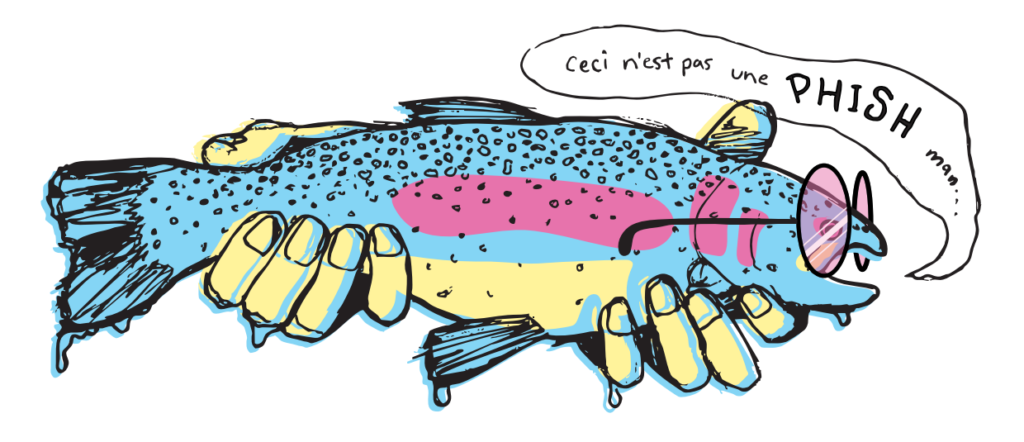
by Rachael Wesley
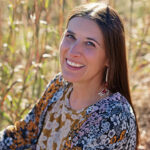
Rachael Wesley
A live music zealot, Rachael Wesley loves how Denver spoils her with concerts. Second Set Chances, her second-coming-of-age Phish-y memoir, is forthcoming in April 2025 through Vine Leaves Press. Find her at rachaelwesley.com

